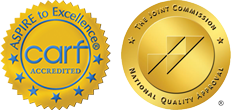Methamphetamine or meth is a highly potent stimulant that has very little use in medical circles. The drug is considered a man-made recreational drug that is typically manufactured in clandestine laboratories located throughout the U.S. and other countries. The drug acts very much in the same way as cocaine or crack but offers a longer-lasting high. The drug is also highly addictive.
Meth acts to stimulate dopamine production in the brain artificially, giving the user a sense of excitement and euphoria. Over time, the constant use of meth will cause the brain to secrete less dopamine naturally, which causes the body to become dependent on the drug. As most people have learned through the years, dependence will eventually lead to an addiction.
Meth Withdrawal Symptoms
When someone becomes addicted to meth, they will typically reach a point where any attempts to stop using the drug suddenly will result in the onset of withdrawal symptoms. These withdrawal symptoms often become so bothersome that it causes the drug user to abort their attempt to “kick the habit.”
While an individual’s withdrawal symptoms might vary based on several factors, some methamphetamine withdrawal symptoms are pretty common among methamphetamine users. The following list of meth withdrawal symptoms includes both psychological and physical symptoms:
• Significant fluctuations in blood pressure and heart rate
• Nausea and vomiting
• Restlessness and agitation
• Lack of energy
• Loss of sexual desire
• Onset of depression
• Mild paranoia
• Sleeping issues
• Increase in appetite
• Suicide ideology in the worst cases
What Happens When Detoxing From Meth?
To be very clear, the onset of withdrawal symptoms represents the body’s attempt to revolt because of being denied the meth it craves. As long as those cravings exist, the meth user will feel this overwhelming need to keep taking the drug. The only way to diminish and eventually eliminate these cravings is for the drug user to detox off the meth.
The detox process can take anywhere from two weeks to a few months to eliminate all withdrawal symptoms. How long it takes usually depends on several factors, including:
• The length of time the meth user has been abusing the substance
• The frequency of the meth user’s drug abuse
• The amount of the substance the user takes regularly
• The presence of psychological factors that might interfere with the detox process
While there is always a chance the drug user will experience residual withdrawal symptoms over months, even years in the worst cases, most individuals will detox in about two to three weeks without medical assistance. The meth detox timeline for a typical detox process would look something like this.
Stage 1: Stage 1 covers the first 24 hours. It includes the onset of mild withdrawal symptoms that will usually start after about 12 hours of abstinence. At that point, the individual might start feeling a little nervous, agitated, and anxious.
Do you have a loved one struggling with addiction?
We know how hard that can be. Give us a call to find out what options you have.
Stage 2: Stage 2 will usually run from days 2 to 7. During this time, the individual will need to deal with symptoms like muscle cramping, nausea, vomiting, strong cravings, increasing depression and anxiety, mood swings, and blood pressure and heart rate issues.
Stage 3: Stage 3 will typically last another week. During this time, the individual’s issues with anxiety and depression will get more profound. Also, the cravings will continue to be a problem. The individual will experience bouts of exhaustion, usually due to the lack of sleep.
Stage 4: Stage 4 represents the turning point. During weeks 3 and 4 of the detox process, the individual should start feeling better physically because most of the physical symptoms will have run their course. That will typically leave the individual to deal with their depression and any residual cravings that might still be present.
Stage 5: After 4 weeks, the individual should see their cravings diminishing and sense a return to normalcy. In the coming weeks and months, the individual should really focus on good nutrition and exercise to help the body and mind return to normal function. If any withdrawal symptoms persist past this point, the individual should see a medical doctor or psychologist.
Treatment For The Addiction
After getting through detox, the addiction sufferer will need treatment to help them resolve issues related to their addiction. The only reliable way to get treatment is through a stint in a reputable rehab center.
As part of the treatment process, each client should get an opportunity to participate in a medical detox program. Medical professionals have developed these programs to keep addiction treatment clients safe as they go through the worst parts of the detox process. Should any client start to experience too much distress, a medical professional would be standing by to intervene.
When the client feels well enough to start therapy or residential treatment, they will start working with a therapist. The task at hand is searching for the root cause or causes of the addiction. The client needs to figure out why they feel the need to abuse any substance. Upon finding the root causes, it becomes easier for the client to develop coping skills to avoid relapses.
While the methamphetamine detox process can be quite concerning, there is no need for panic. It’s a process. If you are contemplating the cessation of your meth abuse, you can expect to deal with these kinds of issues. The good news is that after detoxing and getting treatment, you can go back to living a normal life without the need to depend on drugs like methamphetamine. Discover Recovery in Washington State has a comprehensive meth treatment program for those currently suffering from addiction. Call us to start your new life today.





